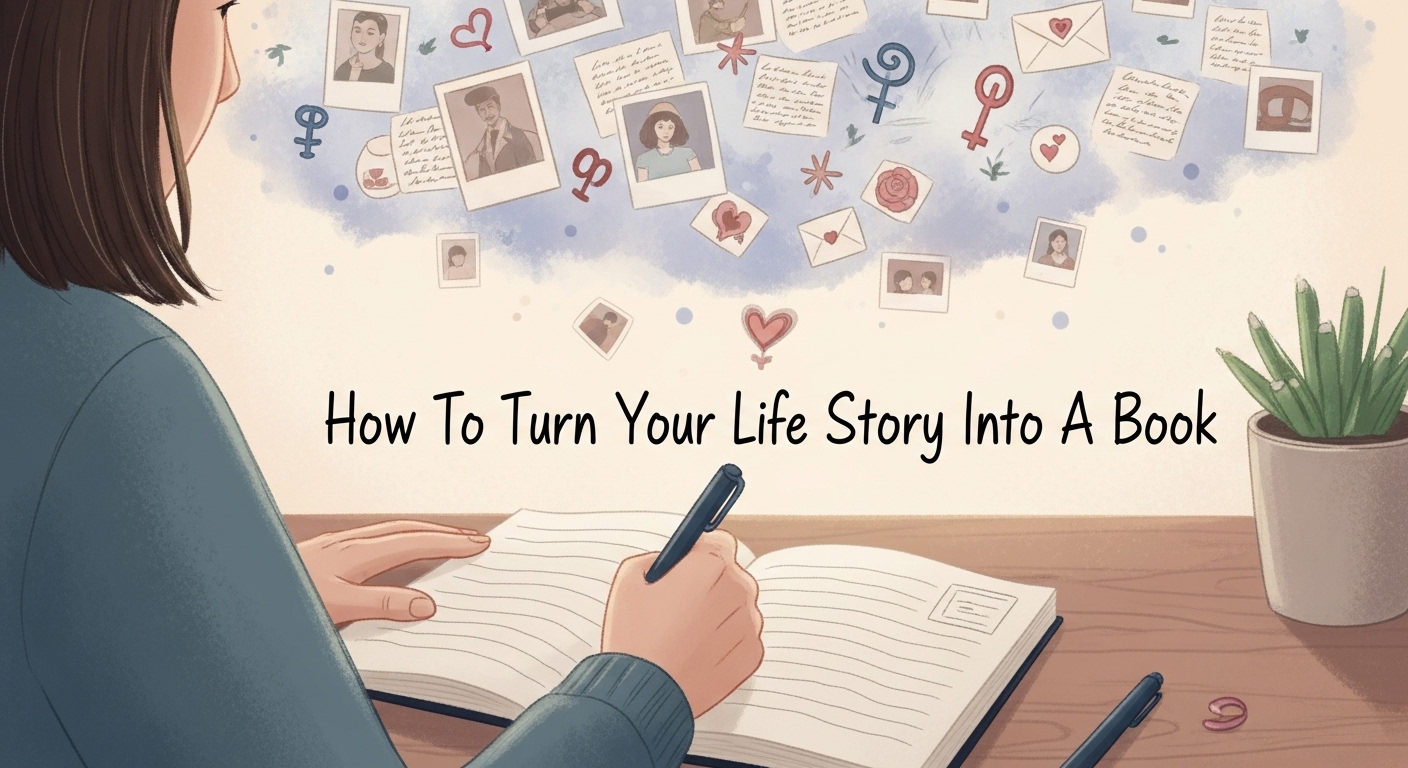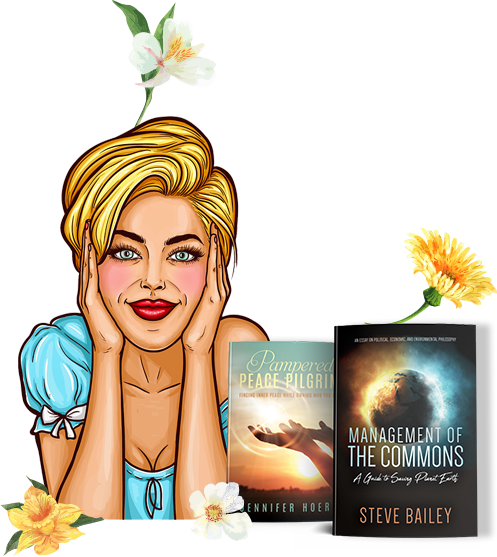
Every person has a unique story worth telling. Whether you’ve faced extraordinary circumstances, overcome great odds, or lived a quiet life filled with deep lessons, your journey can inspire, teach, or connect with others on a powerful level. Turning your life story into a book is not just about recording events — it’s about crafting an emotional experience for readers. But how do you take the raw material of your life and shape it into a compelling narrative? This guide explores how to do just that.
Table of Contents
ToggleUnderstanding Why You Want to Tell Your Story
Before you begin writing, ask yourself why you want to share your life story. This clarity will shape the tone, direction, and purpose of your book.
Some common reasons include:
- To inspire others through hardship or success
- To preserve your legacy for family and future generations
- To process and reflect on personal experiences
- To contribute to a social cause or bring awareness
Knowing your purpose helps determine whether your book will be a memoir, autobiography, or even a fictionalized version of your experiences.
Memoir vs. Autobiography: Choosing the Right Format
Autobiography covers your entire life in chronological order, from birth to present. It’s ideal if your goal is to provide a complete life account.
Memoir, on the other hand, focuses on specific themes, events, or periods in your life. It’s often more emotional, introspective, and driven by a central narrative.
If your story revolves around a particular transformation, relationship, or life chapter, a memoir might be more effective and engaging.
Step-by-Step Help to Write Your Life Journey
Step 1: Begin with Deep Reflection
Before writing a single word, spend time in self-reflection. Dig deep into your memories and emotions. Ask yourself:
- What were the most pivotal moments of my life?
- Which experiences shaped who I am today?
- Are there recurring themes (loss, triumph, identity, healing)?
- What lessons do I want readers to walk away with?
Journaling or recording your thoughts can help uncover forgotten memories and build emotional clarity.
Step 2: Organize Your Story’s Framework
Creating a structure early on gives your writing direction. Consider outlining your story as you would a novel:
- Beginning: Introduce yourself and the world you come from.
- Middle: Dive into the central conflict, transformation, or journey.
- End: Reflect on how your experiences changed you and what you’ve learned.
Even if you’re telling a factual story, it still needs narrative drive — rising action, tension, and resolution.
You can also choose from various narrative formats:
- Linear: Chronological order from one stage to another.
- Non-linear: Flashbacks, fragmented storytelling, multiple timelines.
- Thematic: Each chapter addresses a different theme (e.g., love, loss, identity).
Step 3: Write Honestly and Authentically
Readers resonate with truth, not perfection. Don’t try to make your life sound like a fairy tale — authenticity connects. Be open about your flaws, mistakes, doubts, and emotions.
Writing from the heart doesn’t mean you need to share every detail. Be selective but sincere. Show vulnerability where it matters.
If writing about difficult experiences (abuse, trauma, loss), consider how much you’re comfortable revealing. Writing can be therapeutic, but be mindful of your mental and emotional well-being.
Step 4: Build Vivid Scenes and Characters
A life story should feel alive on the page. Bring readers into your world by showing — not just telling — what happened.
- Use sensory detail: Describe how places looked, smelled, and felt.
- Introduce characters: Include important people in your life, giving them depth and personality.
- Recreate dialogue: When recalling conversations, write them as vividly as possible to capture voices and emotions.
- Include conflict: Every great story needs tension. Show struggles, setbacks, and how you overcame them.
Treat your life like a novel. Make it engaging by adding pace, drama, and emotion while staying true to your experiences.
Step 5: Consider the Role of Others in Your Story
When writing about your life, other people naturally become part of the narrative. This introduces ethical considerations:
- Are you comfortable naming them?
- Will what you write damage relationships?
- Can you fictionalize or anonymize certain people?
- Have you portrayed events fairly from multiple perspectives?
You’re not legally required to get permission in most cases, but it’s wise to proceed respectfully, especially with sensitive content.
Step 6: Revise and Edit with Care
The first draft of your life story is rarely perfect. Once the writing is complete, step away from it for a few days or weeks. Then return with a fresh perspective.
During the editing phase:
- Cut unnecessary details that slow the pace.
- Clarify confusing passages and check for consistency.
- Strengthen your voice and emotional impact.
- Fix grammar and spelling to maintain professionalism.
Consider working with a professional editor. They can help refine the structure, tone, and clarity of your manuscript without compromising your voice. A skilled editor understands how to preserve authenticity while enhancing readability.
Step 7: Decide How You Want to Publish
After you’ve polished your manuscript, decide whether to pursue traditional publishing, self-publishing, or hybrid publishing.
Each path has its pros and cons:
- Traditional publishing may offer wider reach and credibility, but it’s highly competitive and slower.
- Self-publishing offers full control and faster timelines but requires more effort in editing, design, and marketing.
- Hybrid options blend both and may suit authors with niche audiences.
No matter the route, make sure your manuscript is well-edited and professionally formatted.
Step 8: Include Supplementary Material if Needed
Depending on the nature of your story, you may want to add:
- Photos from your life (if publishing a memoir or autobiography)
- Letters, journal entries, or documents that add authenticity
- Chapter intros or reflections to tie in your current perspective
- Discussion questions or messages for readers, especially if your story carries lessons or themes
These additions can enrich your book and help readers form a deeper connection with your journey.
Step 9: Prepare Emotionally for Sharing Your Story
Publishing your life story is a brave act. It opens you to public scrutiny, feedback — both positive and critical — and emotional vulnerability. Prepare for emotional reactions from readers and from those who appear in your story.
However, it also offers a powerful opportunity to inspire, connect, and be heard. Your story may give courage to someone who needs it. That alone can make the journey worthwhile.
Step 10: Share Your Book with the World
Once your book is out in the world, celebrate it. Share it with friends, family, and those who may benefit from your journey. Whether your goal is personal fulfillment or public impact, owning your story is an empowering step.
You can host a launch event, give talks, or share your book through social platforms. Allow it to open doors to conversations, healing, or new chapters in your life.
Final Thoughts
Turning your life story into a book is more than a creative project — it’s a transformative act. It requires courage, reflection, and emotional investment. But the rewards are deep: personal growth, connection with others, and the satisfaction of turning your truth into a lasting legacy.
Your story matters. And writing it could be the most important thing you ever do — for yourself and for others.
FAQs
Q: Do I need to be a professional writer to write my life story?
No. Everyone can write their story. Start with honesty and authenticity. Editors and writing coaches can help polish the final manuscript.
Q: How long should a memoir or autobiography be?
Most memoirs fall between 60,000–90,000 words. Autobiographies can be longer, but readability is key — focus on what truly matters to your narrative.
Q: What if I forget parts of my life?
Use photos, journals, conversations with family, or memory prompts to help reconstruct events. Focus on emotions and experiences more than exact dates.
Q: Can I fictionalize parts of my story?
Yes. Many writers fictionalize aspects for storytelling, especially when combining characters or dramatizing events. If doing so, consider labeling the work as a “novel based on true events.”
Q: Should I hire an editor or ghostwriter?
If you’re unsure about writing or need help shaping your story, editors and ghostwriters can offer professional support while preserving your voice and story.





